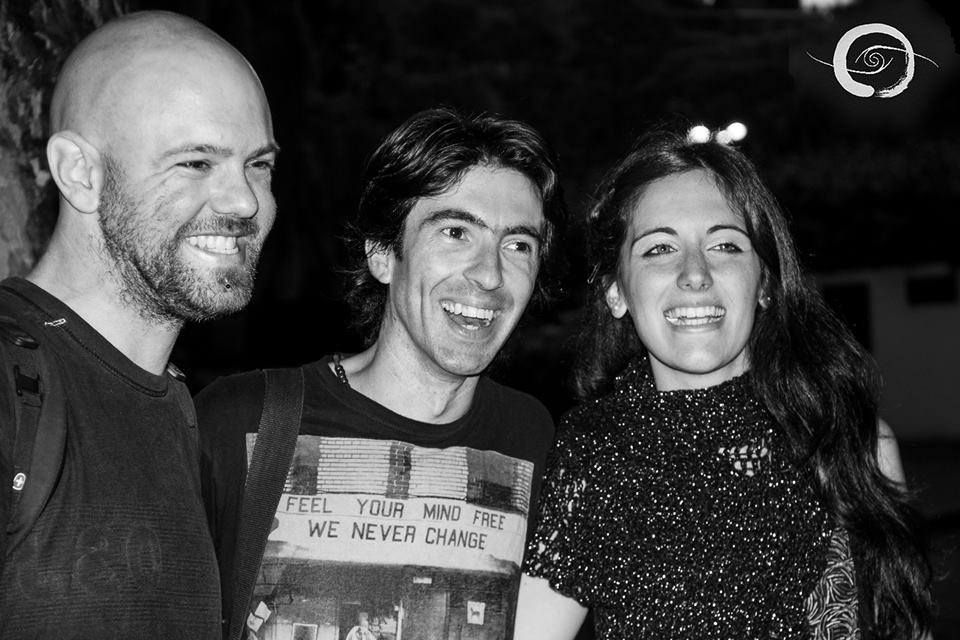
The Kyoto Connection Biography
The Kyoto Connection is an electronic music project that explores the fusion of Japanese soundscapes and melodies with Western rhythms and harmonies. Founded in 2005 by Facundo Arena, the project has become known for its unique blend of cultural sounds and its commitment to accessible music.
Formation and Early Years (2005-2009)
The Kyoto Connection was born in 2005 when Facundo Arena released the project’s first album under the pseudonym “Alternarama.” This debut album was made available for free under a Creative Commons license. In 2007, the project expanded to include Rodrigo Trado on drums, Jesica Rubino on violin, and Marian Benitez. That same year, they released their second album, “The Second Voyage.”
In 2009, the band experimented with an acoustic approach in their EP “Out of Japan,” which featured reimagined versions of songs from their earlier albums.
Rise to Prominence (2010-2011)
The Kyoto Connection’s breakthrough came in 2010 with the release of “No Headphones Required,” a synthpop album with distinct Japanese influences. The track “H.E.A.T” from this album became the soundtrack for the indie video game “3030 Deathwar Redux” by Crunchy Leaf Games. After this release, Marian Benitez left the band and was replaced by Laura Lang on vocals. The new lineup produced the conceptual EP “Father | Son” in 2011, exploring themes of life’s cyclical nature.
Exploring New Horizons (2011-2015)
From 2011 to 2013, The Kyoto Connection embarked on an ambitious project that culminated in their fourth studio album, “Wake Up.” This album featured numerous guest musicians and spanned a variety of musical styles, all interwoven with Japanese melodies and sounds. Notable tracks from this album include “Hachiko,” a tribute to Japan’s most loyal dog, and “Wake Up,” a song about awakening consciousness. After the album’s completion, Laura Lang departed, leaving the core trio of Facundo Arena, Jesica Rubino, and Rodrigo Trado.
In 2015, the band celebrated their decade-long journey with “TEN,” a compilation of their most popular songs.
Ambient Ventures and Major Success (2016-2018)
The Kyoto Connection delved into ambient music with the 2016 release of “Kyoto Soundscapes,” an album blending musical compositions with the soundscapes of Kyoto city. The same year, they released “The Middle Way,” featuring guest vocals from Lelu Blesa.
Their most acclaimed album, “Postcards,” arrived in 2018. This tribute to Japanese ambient music legends, produced entirely on an iPad and an old Akai cassette player, garnered millions of streams globally. The album was reissued on vinyl in 2023 by Isle of Jura Records.
Recent Projects and Continued Evolution (2019-Present)
In 2020, The Kyoto Connection released two albums: “Kokoro,” a collection of singles from the pandemic period, and “1982,” a synthwave album with Japanese melodies, marking Jesica Rubino’s debut as the band’s lead vocalist. The following year, they signed with Isle of Jura Records and released “The Flower, The Bird and The Mountain” in 2022, their third ambient album, which sold out its vinyl edition worldwide and received critical acclaim.
Their latest studio album, “A Journey of a Thousand Miles,” released in 2023, explores the intersection of retro video game sounds and Japanese melodies. The band paused live performances from 2019 to 2024 but resumed with small shows in Buenos Aires in 2024.
Despite their deep musical exploration of Japanese culture, the band members have yet to visit Japan. In 2019, they launched a fundraising campaign on their website to finance a trip, offering their complete discography for free download in exchange for donations.
Band Members
- Facundo Arena: The mail producer and composer, playing synthesizers and occasionally singing.
- Jesica Rubino: The main vocalist and violinist, joined the band in 2007, and later married Facundo. They have a daughter named Cielo.
- Rodrigo Trado: The drummer since 2007 and a talented photographer.
The Kyoto Connection’s music has been featured in numerous films, series, advertisements, podcasts, and independent audiovisual projects. Their official website offers most of their discography for free download and hosts a 24-hour online radio station dedicated to the best Japanese ambient music.
Collaborations
Since 2011, The Kyoto Connection has collaborated with Sunawai Música, led by Rubén Sanchez. Sunawai recreates traditional Okinawan songs through various musical styles and instrumentations, adding a unique dimension to The Kyoto Connection’s performances and recordings.
Artistic Vision
The Kyoto Connection strives to convey a message of self-awareness and overcoming challenges through their lyrics and melodies. Themes such as adversity, love conquering darkness, and the struggle against the darker aspects of oneself are central to many of their songs.
Musical Equipment
The band’s music is primarily produced using vintage synthesizers from the ’80s and ’90s, providing the distinct sound and textures characteristic of their diverse songs. The equipment used includes:
- Roland D-50 (1987)
- Roland Juno GI (2010)
- Korg Wavestation (1990)
- Korg Microkorg (2002)
- Ensoniq TS10 (1993)
- Roland JD-990 (1993)
- Kawai K4 (1989)
- Roland V-Synth (2003)
- Korg M1 (1988)

